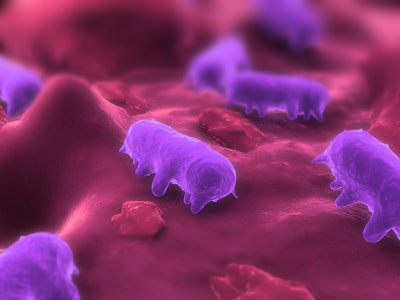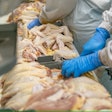
Reducing levels of high-risk Salmonella serotypes in raw poultry parts could help improve public health and reduce salmonellosis cases, according to a new risk assessment from the University of Illinois at Urbana-Champaign.
Our assessment shows that most of the risk in raw poultry products can likely be found in a few poultry parts that have relatively high levels of Salmonella and probably high-virulent serotypes, explained Matthew Stasiewicz, University of Illinois at Urbana-Champaign Associate Professor of Applied Food Safety.
According to Stasiewicz, using Salmonella risk management strategies that target high levels of high-virulent serotypes would help the industry manage the Salmonella risk in finished products by reducing the highest risk outcomes.
Additionally, the study supports the idea that managing low-virulent serotypes would limit improvements in public health.
This is important, he explained, because regulatory policies focused on Salmonella prevalence only could encourage reductions of low-virulent Salmonella, which could have no effect or may potentially increase high-virulent serotypes.
Public data shows that high-levels of high-virulent serotypes are rare in finished chicken parts, however, this risk assessment suggests that much of the public health risk from chicken parts is concentrated in those rare products with a high prevalence of high-virulent serotypes, he said.
While Stasiewicz did not recommend any specific interventions for producers, he did suggest that processors focus on reducing high levels of high-virulent strains in poultry parts versus solely prevalence.
Additionally, using vaccination to target high-risk serotypes could be effective, but Stasiewicz said his team did not model that scenario in this study. However, he added, if one serotype is removed, one or more serotypes will likely take its place.
Because we carried out this project while the U.S. Department of Agriculture (USDA) is changing the Salmonella regulation, we kept the risk assessment as simple as possible with plans for further research in the future, he added.
The USDA’s proposed Salmonella framework
In October 2022, the USDA Food Safety and Inspection Service’s (FSIS) proposed framework to reduce Salmonella that indirectly expands the department’s regulatory control.
If implemented, the new regulations would require poultry companies to test incoming flocks for Salmonella before entering the processing plant, enhance their establishment process control monitoring and FSIS verification and develop an enforceable final product standard.
As of March 2024, there is no implementation date set for the USDA’s framework.

















